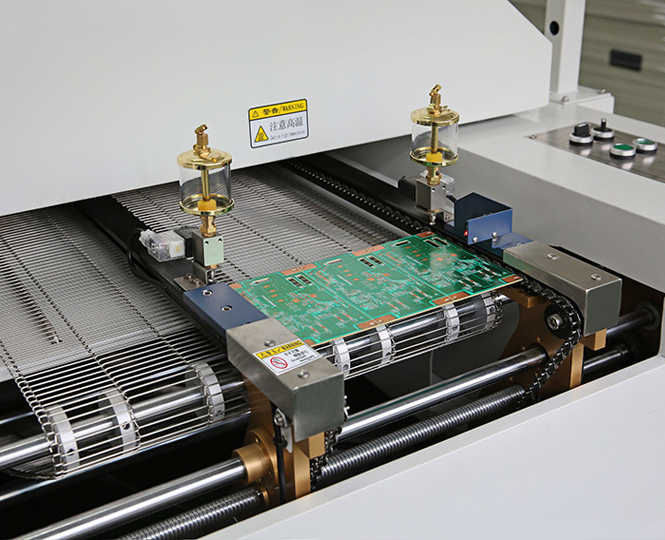The Difference between Reflow Soldering and Wave Soldering

PCB assembly is a crucial process in modern electronics manufacturing, and reflow soldering and wave soldering are two of the most common methods used in the industry. While both methods are used to mount electronic components to a PCB, they differ in their principles and processes. In this article, we will explore the differences between reflow soldering and wave soldering.
Reflow soldering and wave soldering are two different soldering methods used in PCB assembly. Reflow soldering uses hot air or nitrogen to heat the entire PCB assembly, melting the solder paste and attaching the electronic components to the PCB. In contrast, wave soldering involves moving the PCB assembly along a wave-shaped molten solder bath, causing the solder coating to melt and fix the electronic components.
The most significant difference between reflow soldering and wave soldering lies in their soldering methods. Reflow soldering heats the entire PCB assembly uniformly, allowing multiple electronic components to be soldered simultaneously. On the other hand, wave soldering only allows components to be soldered in a straight line along the wave-shaped solder bath. Additionally, reflow soldering can use smaller solder balls, making it possible to solder smaller electronic components. In contrast, wave soldering requires larger solder balls, limiting the size of components that can be soldered.
Another difference between the two methods is their precision. Reflow soldering allows for precise control of the temperature and time of soldering, resulting in high-precision soldering. Wave soldering, however, is difficult to control the temperature and time of soldering, resulting in lower precision soldering. If high-precision soldering is required, reflow soldering is the better choice.
When choosing between reflow soldering and wave soldering, several factors need to be considered. If small electronic components need to be soldered or high-precision soldering is required, reflow soldering is the better choice. If quick, cost-effective soldering is needed, and the components are relatively large, wave soldering may be more suitable.
In conclusion, reflow soldering and wave soldering are two different methods of PCB assembly. Their soldering methods, precision, and applicability are all different. When deciding which method to use, it is essential to consider the size and precision of the components being soldered and the desired cost and speed of the process. By taking these factors into account, manufacturers can choose the method that best suits their needs and ensure high-quality PCB assembly.

